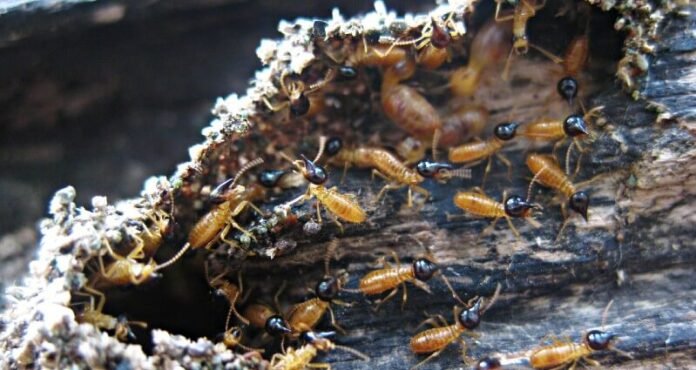Key Takeaways:
- Learn the habits of termites and their potential damage to wooden structures.
- Discover preventative measures to protect your home.
- Understand the differences between DIY and professional termite control methods.
- Explore the latest innovations in termite control technology.
Table of Contents
Introduction
Every homeowner dreads the thought of termites. These tiny pests, often unnoticed until significant damage has occurred, can wreak havoc on homes and financial security. Being proactive is the key to combating these pests effectively. Understanding their behavior and implementing preventative strategies is crucial for protecting your investment. One critical step is ensuring a regular termite inspection Charlotte, NC. This can assist in preserving the structural integrity of your residence while minimizing the likelihood of undetected infestations.
Globally, termite infestations can lead to billions in property damage every year. This damage is not just limited to the financial strains on homeowners but also has environmental impacts due to the loss of wooden materials. This necessitates both awareness and intentional action. Employing effective measures for control and prevention can significantly alleviate these risks, preserving homes and providing physical and mental peace of mind.
Understanding Termite Behavior
Termite species are diverse, but the most troublesome for homeowners include Subterranean, dry wood, and damp wood termites. Subterranean termites, for instance, are known for creating elaborate mud tubes to traverse moisture-rich environments while searching for cellulose material in wood. The Britannica notes that understanding termite biology and behavior is crucial for effective management. For example, Subterranean termites require contact with the soil to maintain their moisture levels, so interventions often target disrupting this contact.
Potential Damages Caused by Termites
Termites may result in the degradation of crucial structural wood components within residences, affecting beams, flooring, and walls. The damage isn’t solely aesthetic; it can compromise the structure’s safety. According to data published by Statista, termite damage in the United States alone generates repair costs of billions of dollars annually. Beyond structural damage, these insects can also destroy personal property, such as furniture and essential documents, compounding their economic impact.
Preventive Measures Everyone Should Implement
Prevention begins with regular inspections—a vigilant eye can make all the difference. Homeowners should regularly inspect their properties for signs like mud tubes, nests, and discarded wings, indicative of termite activity. Addressing moisture issues is critical since many termites are attracted to damp environments. Landscaping tips, such as keeping a gap between the soil and wooden parts of your structure, can help prevent colonies from encroaching upon your home. Barrier and wood treatments are also reliable preventive measures, as they create protective layers that deter termite entry.
Choosing Between DIY and Professional Termite Control
DIY pest control measures offer a hands-on approach that can be initially feasible for minor infestations. Techniques such as applying borate treatments on wood and using plants that naturally repel termites can provide a reprieve. However, the depth and complexity of larger infestations often necessitate professional intervention. Professionals leverage specialized knowledge and tools to eradicate termites with higher efficacy and safety. Experienced pest control services provide comprehensive solutions—usually employing a combination of bait systems, fumigation, and modern technologies—that offer longer-term assurance and peace of mind.
Innovative Technologies in Termite Control
The termite control industry has recently embraced technological advancements, offering revolutionary solutions to pest problems. Technologies such as infrared scanners for early detection and advanced baiting systems have reduced the need for intrusive measures. Eco-friendly solutions are becoming more prominent, ensuring that the battle against termites also considers the planet’s health. These innovations promise not only efficiency but also minimal disruption to daily life while empowering homeowners to take a proactive stance with the help of cutting-edge tools.
Tips for Maintaining a Termite-Free Environment
Ensuring a termite-free environment involves a diligent routine. Regular maintenance is vital; a yearly checklist is a sound strategy for preventing infestations. Such a checklist may include cleaning gutters, reducing wood-soil contact, and removing any potential food sources close to your home. Joining community awareness programs or participating in local governments’ initiatives further promotes sustainable termite prevention efforts. These communal strategies supplement individual actions, creating a germ-free environment for neighborhoods.
Conclusion
Battling termites requires a combination of precautionary measures and effective action. A mix of prevention, informed action, and technology ensure you’re prepared for these wood-munching invaders. Staying vigilant and integrating a balanced approach to termite control can protect your home from costly damages. Engage in the conversation by sharing your termite experiences or inquiries in the comments, as every shared insight contributes to the collective defense against this persistent foe.
Staying informed and continually educating yourself with further resources ensures that your home remains secure and sound against the threat of termite damage.
If you want to know more about Are Termites Dangerous? then visit our Featured category.



























